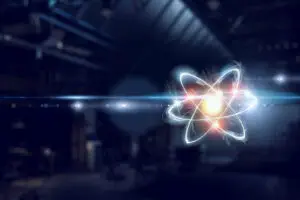 Nuclear startup Avalanche Energy has modest funding, a skeleton crew, a pocket-sized prototype — and grand ambitions.
Nuclear startup Avalanche Energy has modest funding, a skeleton crew, a pocket-sized prototype — and grand ambitions.
For more than 70 years, governments, oil and gas companies, and entrepreneurs have dreamed of harvesting energy from the nuclear fusion reaction. But while nuclear fission plants have been providing electricity around the world since the 1950s, nuclear fusion has never come to fruition.
Nevertheless, fusion has been having its moment of late. A year ago, Canary Media reported that scores of VCs, billionaires and celebrities had become smitten with fusion energy and were spending money like drunken fusion scientists on an energy source that still exists only in science-fiction novels.
Since then, the trend has only accelerated. More than $4 billion in private capital has flowed into fusion research in the last few years.
One of the beneficiaries of this bonanza, Avalanche Energy, is hoping to succeed where others have failed with a capital-efficient, downsized approach to generating electricity from fusion. The Seattle-based fusion energy startup plans to use an unconventional electrostatic technique to scale its modular fusion cell down to the size of a fire extinguisher.
Getting small
To achieve fusion, hydrogen must be converted into plasma, a transformation that requires million-degree temperatures, much hotter than even the core of the sun. In the medium of the plasma, negatively charged electrons separate from positively charged atomic nuclei.
Fusion machines compress and confine the plasma in order to push the freed-up nuclei so close together that they overcome repellant electrostatic forces and ultimately fuse. This process releases neutrons, and it’s this energy that scientists dream of harvesting to do things like drive a conventional turbine. The problem is that more energy is required to catalyze fusion than results from the process — a lot more. The holy grail everyone is seeking is a process that creates more energy than is needed to power it, also called net energy or positive output.
A lot of the fusion teams making a run at this most difficult of physics problems work on a grand scale that requires giant lasers or massive magnets made of exotic materials, not to mention sky-high stacks of cash and plenty of personnel. Magnetic confinement devices such as tokamaks require major real estate — Europe’s International Thermonuclear Experimental Reactor project takes up nearly 450 acres.
In sharp contrast, Avalanche’s small-scale modular approach is more akin to Tesla’s electric-vehicle battery design, co-founder and CEO Robin Langtry told Canary Media in an interview. “It’s hundreds of little cells that we can mass-produce in a giga-fusion factory. You might need a few of them for a car, a dozen for a bus, maybe 100 for an airplane.”
Leave a Reply